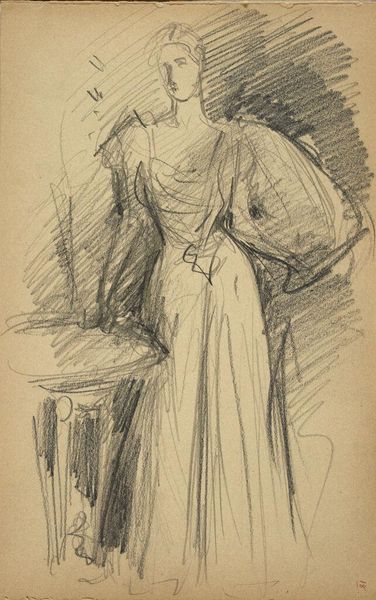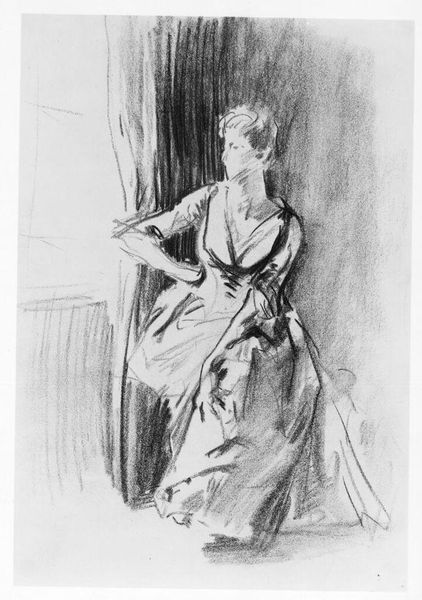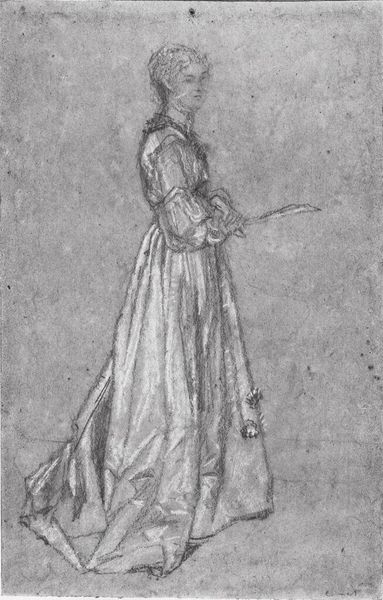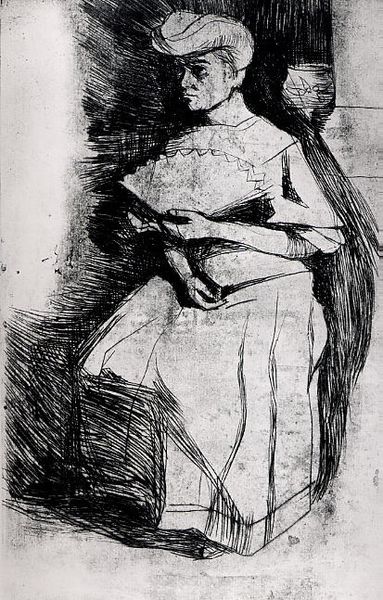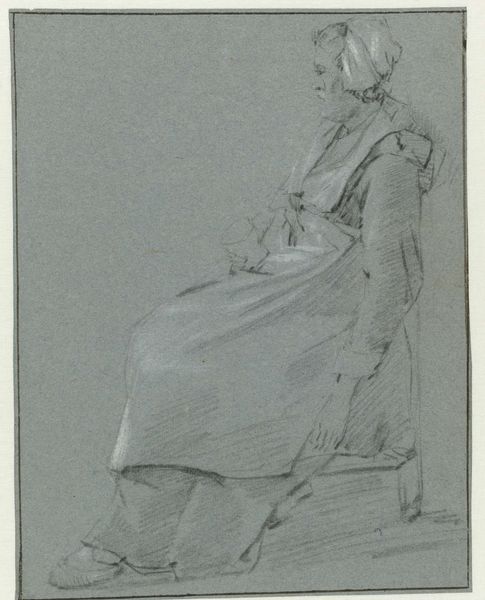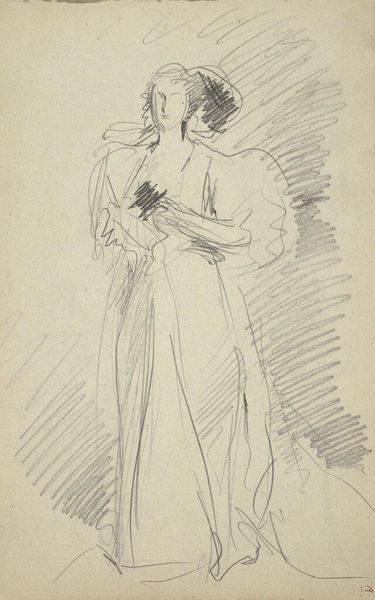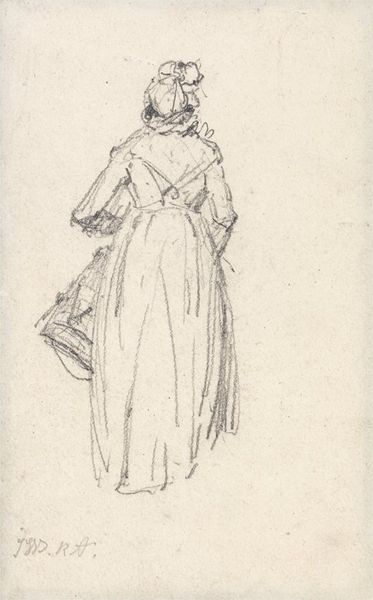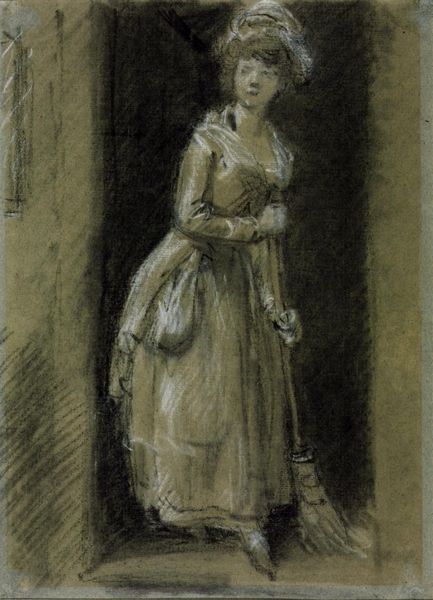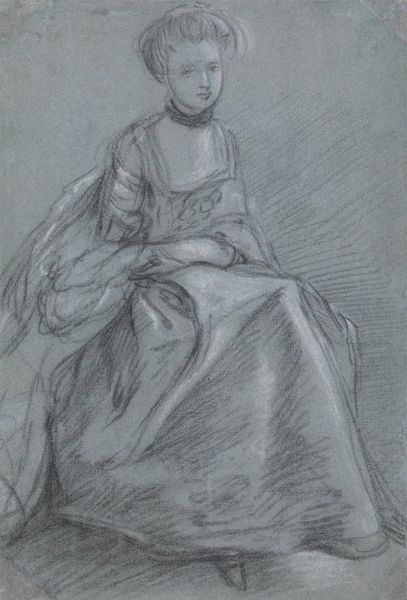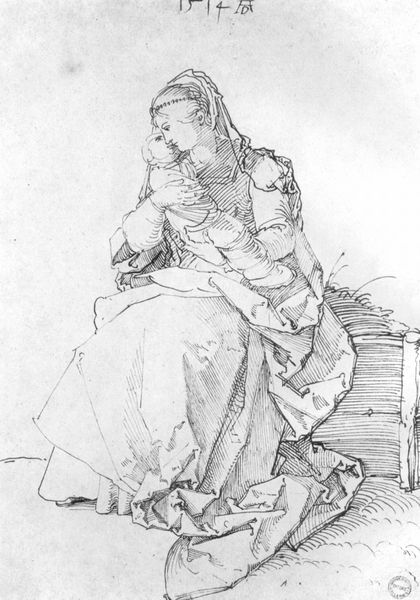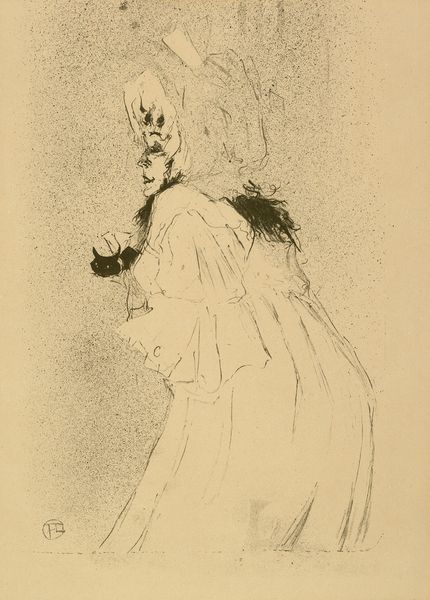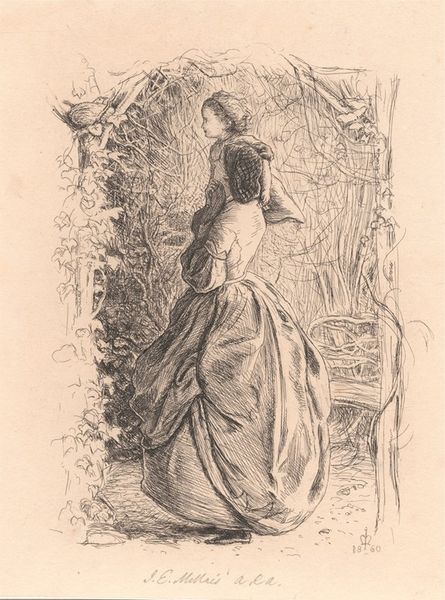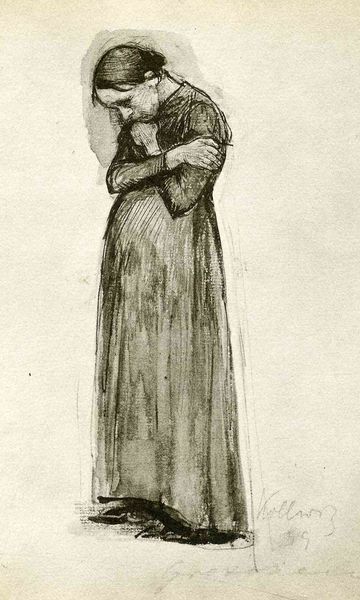
drawing, pencil
#
portrait
#
pencil drawn
#
drawing
#
pencil sketch
#
figuration
#
pencil drawing
#
pencil
#
academic-art
#
realism
Dimensions: 11 3/4 x 8 1/2 in. (29.8 x 21.6 cm)
Copyright: Public Domain
Curator: It is somber, almost like a ghost fading into the shadows. There's a strange tension between the starkness of the figure and the roughly shaded background. Editor: Indeed. This is Thomas Hovenden's "Standing Woman," created around 1878. Hovenden was a key figure in late 19th-century American genre painting, very interested in the representation of women. Here, using pencil, he captures what appears to be a preliminary study. Curator: A study for what, precisely? The pose seems conventional for portraits of the time, yet the dark scribbling overwhelms the composition. What societal expectation or constraint might Hovenden be commenting on through this treatment? Editor: That's a crucial question. Hovenden, as a socially conscious artist, was actively representing contemporary social issues. You have to look beyond the superficial elegance of the figure. Her positioning in relation to that amorphous shadow feels very deliberate, almost claustrophobic. Perhaps Hovenden wanted to convey an awareness of women's restricted roles in public life, confined by the 'shadows' of Victorian societal expectations? Curator: The loose handling of the medium speaks volumes, too. There is nothing photographic, slick, or finished here. We are seeing something raw, unfinished—vulnerable. That makes the artist’s subjectivity—Hovenden’s male gaze—an important aspect of our critical inquiry. Was it a sensitive portrayal, or something that objectifies this female figure? Editor: It could very well be that it critiques these power dynamics and artistic conventions precisely. His drawing method emphasizes her presence, but within confining strokes that question how such images were constructed at that time, reflecting anxieties of that society in transformation. Curator: Perhaps the intention wasn't simply to render a likeness, but rather to subtly question it through formal means, the composition turning into a symbolic staging. Editor: Exactly! Hovenden leaves the narrative ambiguous but provides these visual cues— the dark background and fragile linework—which encourage us to ponder broader socio-political dynamics. It makes one look beyond merely observing the aesthetic qualities into reading beyond its making and meaning. Curator: I agree entirely. It is that tension between skillful rendering and expressive abstraction that generates depth in what could easily be just another period portrait. Editor: This pencil sketch offers rich, understated historical commentary in addition to alluding formal queries on his practice as an artist.
Comments
No comments
Be the first to comment and join the conversation on the ultimate creative platform.
